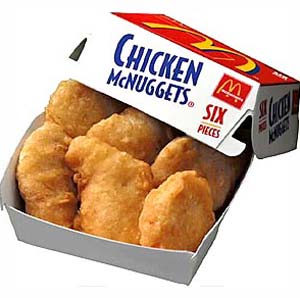 Do you find yourself drinking more than a few sodas a day? Do you want to try and kick the habit? Do you care? Take a look at this November, 2009, post from NBA player Caron Butler's blog (BTW, my husband was the one who made me aware of this, as I don't really follow the NBA too closely):
Do you find yourself drinking more than a few sodas a day? Do you want to try and kick the habit? Do you care? Take a look at this November, 2009, post from NBA player Caron Butler's blog (BTW, my husband was the one who made me aware of this, as I don't really follow the NBA too closely):"I lost 11 pounds this summer by giving up Mountain Dew. That's right Mountain Dew. A lot of people don't know I'm a Mountain Dew addict so I guess this is my confession.
To try and give this up was crazy for me! I was going through withdrawals. I was in the bed sweating. My wife would turn over in the bed and ask "Are you OK?" Honestly, those first two weeks without The Dew [were] the roughest two weeks of my life. I'm talking headaches, sweats and everything. Before that I drank at least six 12-ounce Mountain Dews a day.
It was so bad at one point that I had to have a cold one right there at the night stand before I went to bed. I had to get the coasters and let it drip a lil' bit and just have it waiting on me. Come 2 a.m., I'd wake up out of my sleep, I'd pop one open and hear the fizz sound ... and just down it!
Then I always had to have another one in the morning when I woke up. Before practice I had one too and before games I would knock back two."
Let's repeat: at least six 12-ounce cans of Mountain Dew per day. Plus, he mentions later in the blog how he would bring two liters to each game - one to down before the game and one for halftime. Seriously, that's a lot of Dew (and a lot of caffeine, high-fructose corn syrup and preservatives, among other things - check out the ingredients in original Mountain Dew here).
Now, I don't know much about Caron Butler (well, I do know he was recently signed by the Dallas Mavericks, but that's really it). However, the fact that he was willing to share his story is awesome - to show that not only are sodas addictive and bad for your health, but a truly hard habit to kick...even for an NBA star.
He goes on to publicly say how much support he has received from his fans and how hard it has been to "stay off the Dew". But the best part of this story? He encourages his fans to kick the habit, too:
"Mountain Dew is a very popular drink and it's one of those drinks that is very hard to get off of. Fortunately, I've been doing a pretty good job staying away from it. And my fans can too. You just have to believe! You got to dig deep folks!Even though I'm off the Dew now, I did have a moment of weakness this summer. I decided to document it for you for inspiration! For hope! To show you that un-doing the Dew is difficult but really possible."
Hey, if an NBA player can be true and honest in his struggles to get healthy and influence even a few kids from drinking soda, I'm all for it.


.jpg)
